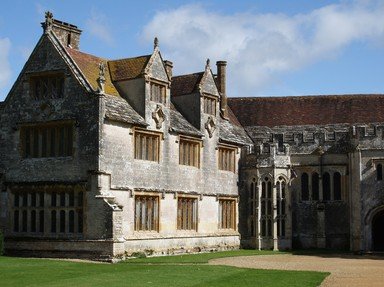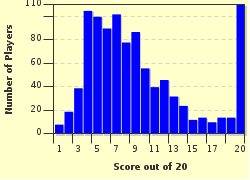Quiz Answer Key and Fun Facts
1. Season Two begins in 1532 or so. In Rome - aerial shot of St. Peter's Basilica - Pope Paul III consults with Cardinal Campeggio about Henry VIII's "great matter." Really?
2. Evil Thomas Boleyn bribes a cook to poison the Bishops who oppose Henry's will. Several Bishops die, but Moore and Fisher don't eat the poisoned food. Really?
3. The Bishops grudgingly vote to accept Henry as Head of the Church of England, "as far as the law of Christ allows." The qualification lets some continue to deny his authority. Really?
4. Henry re-introduces Anne Boleyn to the French court at a party in "English occupied France." King Francis' family don't attend, out of respect for Queen Catherine. Anne is snuck in as a masked dancer, and charms the nobility. Really?
5. The Holy Roman Empire's Ambassador Chapuys plots with a mysterious hooded man to murder Anne Boleyn. Really?
6. Thomas Wyatt is shocked to discover that Elizabeth Darrell, a lady in waiting to Queen Catherine, hanged herself after Catherine's death in 1536. Really?
7. Sir William Brereton, a secret Papal agent, attempts to assassinate Anne Boleyn during her coronation procession, but he misses his mark and hits someone else. Really?
8. "Fortunately, we have a new weapon to promote our ideas. It's called the printing press, my lord, and it will change the world." George Boleyn marvels at the novel machine. Really?
9. "Mark, play a volta!" Mark Smeaton is a homosexual, as evidenced by his encounters with George Boleyn and his libidinous remarks to Anne Boleyn about . . . well, let's leave it there. Really?
10. Pope Paul III tells William Brereton that Paul has created the Order of Jesuits. He invites Brereton to join. Really?
11. Arch-heavy George Boleyn sexually assaults his young bride Jane on their wedding night. He and his lover Mark Smeaton snicker about George marrying a woman, given their mutual sexual preference. Really?
12. The play's the thing. Thomas Cromwell stages a play titled "Kinge Johan" by "Mr. Bale," as propaganda supporting Henry and church reform. Henry, Anne Boleyn, Thomas Boleyn and George Boleyn enjoy the performance. Really?
13. King Henry is critically injured by Henry Norris in a joust. Cromwell and the Boleyns lay plans to put the infant Princess Elizabeth on the throne if the king dies - with a "Protector," of course. Really?
14. Henry Norris speaks to King Henry about Norris' romantic interest in Madge (Margaret) Shelton. This is a problem: Madge is the king's mistress, and he might even marry her. Really?
15. Sneaky Thomas Cranmer smuggles his wife into England in a wooden crate, because priests aren't allowed to marry. Really?
16. King Henry has an affair with Lady Eleanor Luke. They carry on even after Anne Boleyn bears Henry's daughter Elizabeth. Really?
17. Anne Boleyn wears yellow to celebrate Catherine of Aragon's death, but Henry wears black. Really?
18. Thomas Boleyn is imprisoned in the Tower of London when his daughter Anne is arrested, but is released on the day she is executed. Really?
19. Four members of court are arrested and accused of adultery with Anne Boleyn. William Brereton confesses, although he is innocent. Really?
20. Thomas Cranmer attends Anne Boleyn's execution. He urges the crowd to kneel as the sentence is carried out. Really?
Source: Author
ignotus
This quiz was reviewed by FunTrivia editor
bloomsby before going online.
Any errors found in FunTrivia content are routinely corrected through our feedback system.

